Before you plan a weekend excursion on country roads or fight traffic with cars, you will need to invest in some very important equipment – namely riding gear. Body protection is a must when riding your motorcycle and nothing could be more important than a helmet.
Whether you ride a motorcycle as a pleasure seeker or commuter, riding on two wheels is a phenomenal experience designed to give you years of enjoyment and satisfaction. Choosing a helmet isn’t just figuring out your size. It’s buying a helmet that will actually work to protect your head in the event of an impact.
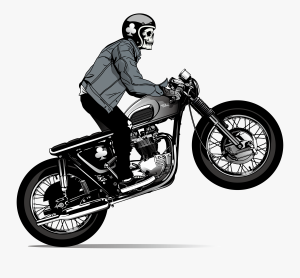
Several kinds of helmets
You will notice that a motorcycle helmet looks much different from a dirt bike or a motocross none. Designed for motorcycles are more round without the extended chin protection needed for dirt bike riding. What’s more, you have a variety of choices depending on your preference:
- Full Face Helmets
- Dual Sport Helmets
- Half Shell Helmets
- Modular Helmets
- Open Face Helmet
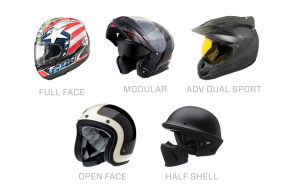
What features do you need?
What the helmet is made of influences a number of factors including weight, comfort and safety rating. Polycarbonate, Fiberglass composite and Carbon Fiber compose most helmets with a layer of expanded polystyrene (EPS) foam. Helmets typically range in weight from 1400 to 1800 grams. The key to weight is a properly fitting helmet so the weight is distributed evenly around your head and shoulders. If the center of gravity is off a lighter helmet can feel heavier and strain your neck. Modular helmets often weigh more than a Full Face because of the apparatus installed to flip up the visor.
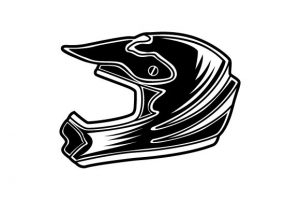
How to measure your helmet size?
A properly fitted helmet can play a major role in the outcome of an accident. The first step in finding a motorcycle helmet is determining your head size. A helmet that is too big will not protect your head as well as a properly fitted helmet. Follow these steps:
- Wrap a soft measuring tape around your head about a half inch above your eyebrows, above your ears and around the back of your head at the largest point. It’s best to have assistance when measuring.
- Compare your head size with the specific motorcycle helmet manufacture’s size to find a match. Each motorcycle helmet manufacture provides different sizing charts for their helmets so you will need to compare your helmet size to each brand’s sizing.
- Try the helmet on before using it. The helmet should sit squarely on your head with the top of the helmet’s eye port just above your eyebrows. A properly fitted motorcycle helmet will not go on easy at first but loosen slightly as it is broken in.
- If the helmet moves or your fingers fit easily between your head and the helmet you’ll likely need a smaller size.
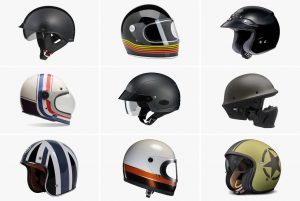
What will the helmet be used for?
If riding is your everyday transportation or you take weekly road trips, higher end helmets may prove to be more comfortable and offer better dynamics and reduced wind noise. Versatility and comfort is important for touring, traveling long distance or riding for extended periods of time.Many bikers join riding groups and if you haven’t already done so eventually you’ll pal around with others and find group riding enhances the overall experience. One key element to group riding is communication and you’ll want a helmet with built in communication provisions. You can install most blue tooth systems in just about any helmet with a few exceptions.

How long to replace a helmet?
After five years, you should replace a motorcycle helmet. Or just damaged in a crash or even dropped.




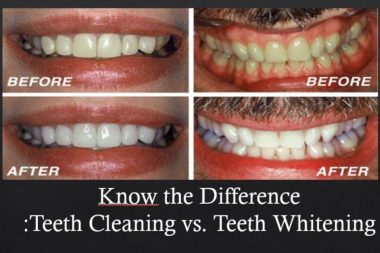





Leave a Reply